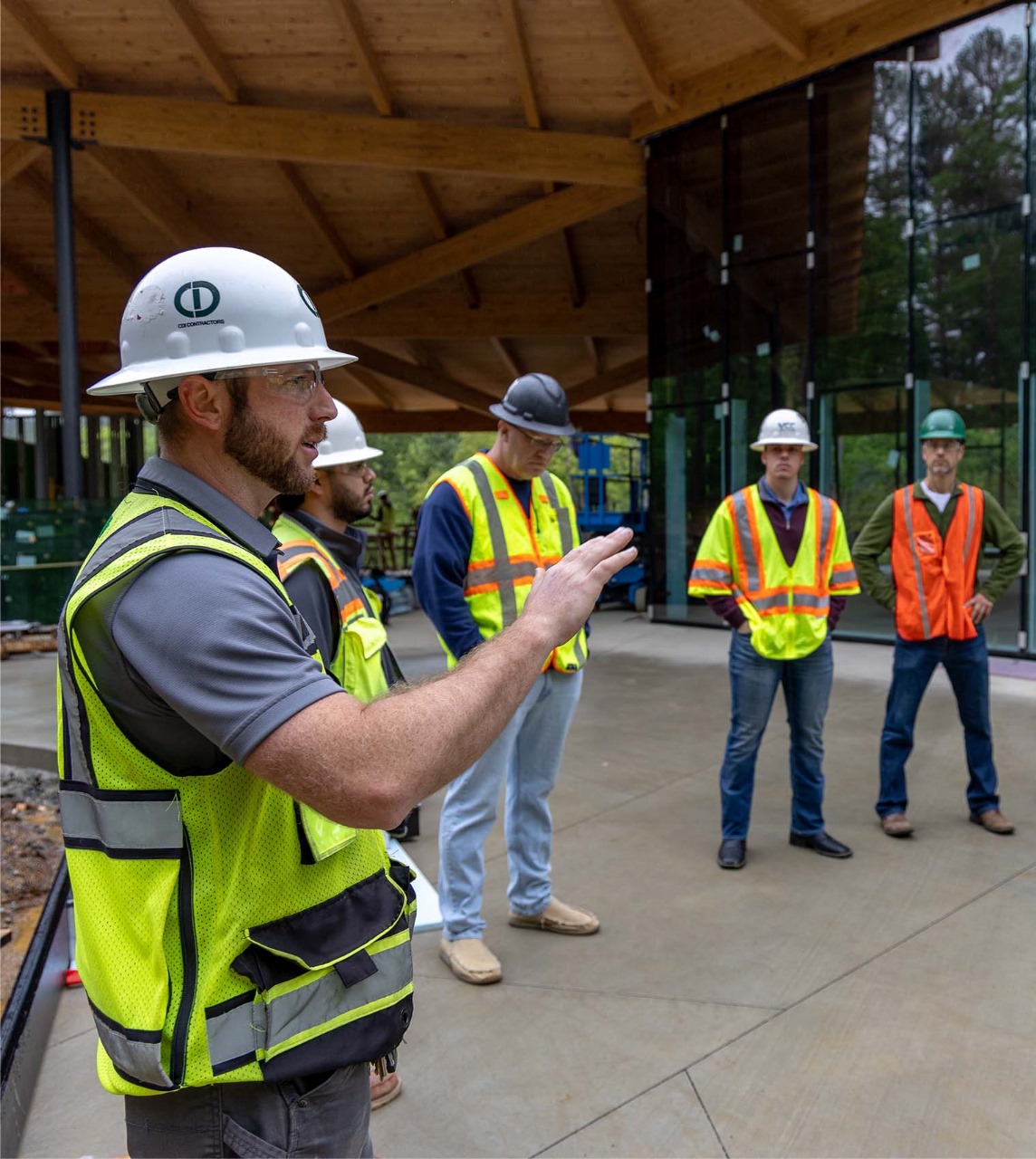In today’s fast-paced industrial environments, where operations involve complex machinery and high-risk processes, effective Workplace safety communication stands as the backbone of a safe and productive workforce. When employees clearly understand safety protocols, emergency responses, and risk prevention methods, the likelihood of accidents and downtime decreases dramatically. This case study explores how leading industrial organizations have implemented successful communication strategies to enhance safety outcomes, boost employee engagement, and foster a strong safety culture.
The Importance of Workplace Safety Communication in Industrial Environments
Industrial settings—ranging from manufacturing plants to construction sites—are inherently prone to hazards. Heavy machinery, hazardous materials, and intricate workflows all demand rigorous safety procedures. However, even the best-written safety policies are useless without clear, consistent communication.
Bridging the Gap Between Policy and Practice
Safety communication serves as the bridge that connects management’s safety vision to the workers’ day-to-day operations. Without effective communication, employees may misunderstand or overlook key safety protocols. In contrast, when communication is timely, clear, and interactive, it builds trust, ensures compliance, and empowers workers to act safely and responsibly.
Why Industrial Companies Struggle with Safety Communication
Many organizations face challenges such as language barriers, information overload, or inconsistent safety training. These issues lead to confusion, complacency, and even resentment among employees. Successful industrial leaders recognize that overcoming these challenges requires a strategic communication plan tailored to the specific needs of their workforce.
Case Study 1: Transforming Safety Culture in a Manufacturing Plant
One of the most striking examples of successful workplace safety communication comes from a large automotive manufacturing plant in Michigan. Before implementing its new communication strategy, the plant faced recurring safety incidents, low morale, and high absenteeism rates.
Identifying the Problem
An internal audit revealed that most accidents resulted from miscommunication—workers either misunderstood safety instructions or failed to report near misses promptly. The existing safety meetings were formal and one-directional, leaving little room for employee feedback.
The Strategy
Management redesigned the communication system using a three-tiered approach:
- Daily Safety Huddles: Short morning meetings where team leaders discussed the previous day’s incidents and reinforced key safety reminders.
- Visual Communication Tools: Large safety dashboards and color-coded charts displayed incident trends and safety goals in real time.
- Open Feedback Channels: Workers were encouraged to share safety concerns anonymously via digital kiosks placed on the production floor.
The Results
Within a year, the plant saw a 40% reduction in recordable incidents and a noticeable improvement in employee engagement. Workers began taking ownership of their safety performance, and communication became a two-way process rather than a management directive.
Case Study 2: Enhancing Safety Through Digital Communication in Construction
A mid-sized construction firm based in Texas took a different route by leveraging digital tools to improve safety communication. With multiple project sites across the state, ensuring consistent safety messaging was a challenge.
The Challenge
Traditional paper-based safety reports caused delays in communication. Supervisors often failed to receive incident updates on time, leading to reactive instead of preventive safety actions.
The Solution
The company implemented a mobile EHS (Environment, Health, and Safety) communication app. This digital platform allowed real-time sharing of safety alerts, training videos, and hazard notifications. The app supported multiple languages, ensuring inclusivity for a diverse workforce.
Key Features of the Digital Approach
- Instant Notifications: Workers received immediate alerts for site-specific hazards.
- Interactive Training Modules: Employees could access short, scenario-based videos on their smartphones.
- Data-Driven Insights: Management analyzed data trends to identify recurring risks and develop targeted safety programs.
The Outcome
Accident response time dropped by 60%, and safety compliance scores improved significantly. The company’s digital transformation not only strengthened safety outcomes but also demonstrated how technology can simplify and enhance workplace safety communication.
Case Study 3: Building a Culture of Safety in an Oil & Gas Facility
In one of the world’s most high-risk industries—oil and gas—a global energy company operating offshore drilling sites made communication its top safety priority.
The Initial Situation
Despite having robust safety systems in place, the company faced frequent near-miss incidents and inconsistent hazard reporting. Investigations revealed a cultural issue: workers felt hesitant to speak up due to fear of blame or disciplinary action.
The Communication Overhaul
The leadership launched an initiative called “Safety Voices Matter,” focusing on open, non-punitive communication. The key components included:
- Empathy-Based Training: Supervisors underwent training on active listening and constructive feedback.
- Anonymous Reporting Tools: Employees could report hazards without revealing their identities.
- Recognition Programs: Workers who proactively identified risks were publicly acknowledged during safety briefings.
Results Achieved
The initiative led to a 50% increase in near-miss reporting and a 35% reduction in actual incidents. The shift from a compliance-driven culture to an open communication environment empowered employees to prioritize safety in every task.
Key Lessons from Successful Industrial Case Studies
Analyzing these success stories reveals common threads that can guide any organization aiming to strengthen its safety communication practices.
1. Leadership Commitment is Non-Negotiable
In each case, senior leaders were actively involved in promoting communication. Their participation signaled that safety wasn’t just a compliance matter—it was a core company value. When leadership demonstrates genuine concern for safety, employees mirror that commitment.
2. Two-Way Communication Builds Trust
Effective workplace safety communication is never one-directional. Encouraging workers to express concerns, ask questions, and share insights creates a culture of trust. Employees who feel heard are more likely to adhere to safety procedures and take initiative.
3. Visual and Digital Tools Enhance Understanding
Visual dashboards, mobile apps, and digital training modules simplify complex safety information. When workers can quickly access or visualize data, comprehension improves, and response time decreases.
4. Continuous Feedback Strengthens Performance
Feedback mechanisms—such as suggestion boxes, digital kiosks, or open forums—allow companies to monitor the effectiveness of their safety communication strategies. Regular updates and transparent reporting ensure continuous improvement.
5. Recognition Motivates Safe Behavior
Acknowledging employees for their safety contributions reinforces positive behavior. Recognition programs, even small ones, go a long way in maintaining motivation and accountability.
How to Implement Effective Workplace Safety Communication in Your Organization
Organizations looking to replicate these successes can start by assessing their current communication structure and identifying areas for improvement.
Step 1: Conduct a Safety Communication Audit
Evaluate how information flows from management to workers and vice versa. Identify bottlenecks, language gaps, and outdated channels that hinder effective communication.
Step 2: Establish Clear Communication Channels
Use multiple platforms—notice boards, email updates, mobile apps, and meetings—to ensure that safety information reaches everyone, regardless of their role or location.
Step 3: Train Supervisors as Safety Communicators
Supervisors are the bridge between management and workers. Provide them with training in empathetic listening, conflict resolution, and clear message delivery.
Step 4: Embrace Technology for Real-Time Updates
Digital tools such as safety management software or mobile communication apps can revolutionize how safety information is shared, tracked, and analyzed.
Step 5: Reinforce the Message Consistently
Consistency is key. Reinforce safety messages daily through signage, briefings, and feedback sessions. Over time, these practices embed safety communication into the organization’s DNA.
Conclusion: Building a Safer Future Through Communication
The success stories highlighted in this case study show that effective workplace safety communication isn’t just about passing along rules—it’s about building a shared sense of responsibility. When communication is clear, consistent, and inclusive, it transforms safety from a policy into a culture. Industrial organizations that prioritize open dialogue, leadership involvement, and digital innovation will not only reduce incidents but also empower their workforce to create a safer, more resilient future.
Strong communication saves lives. The more we talk about safety, the safer our workplaces become.



